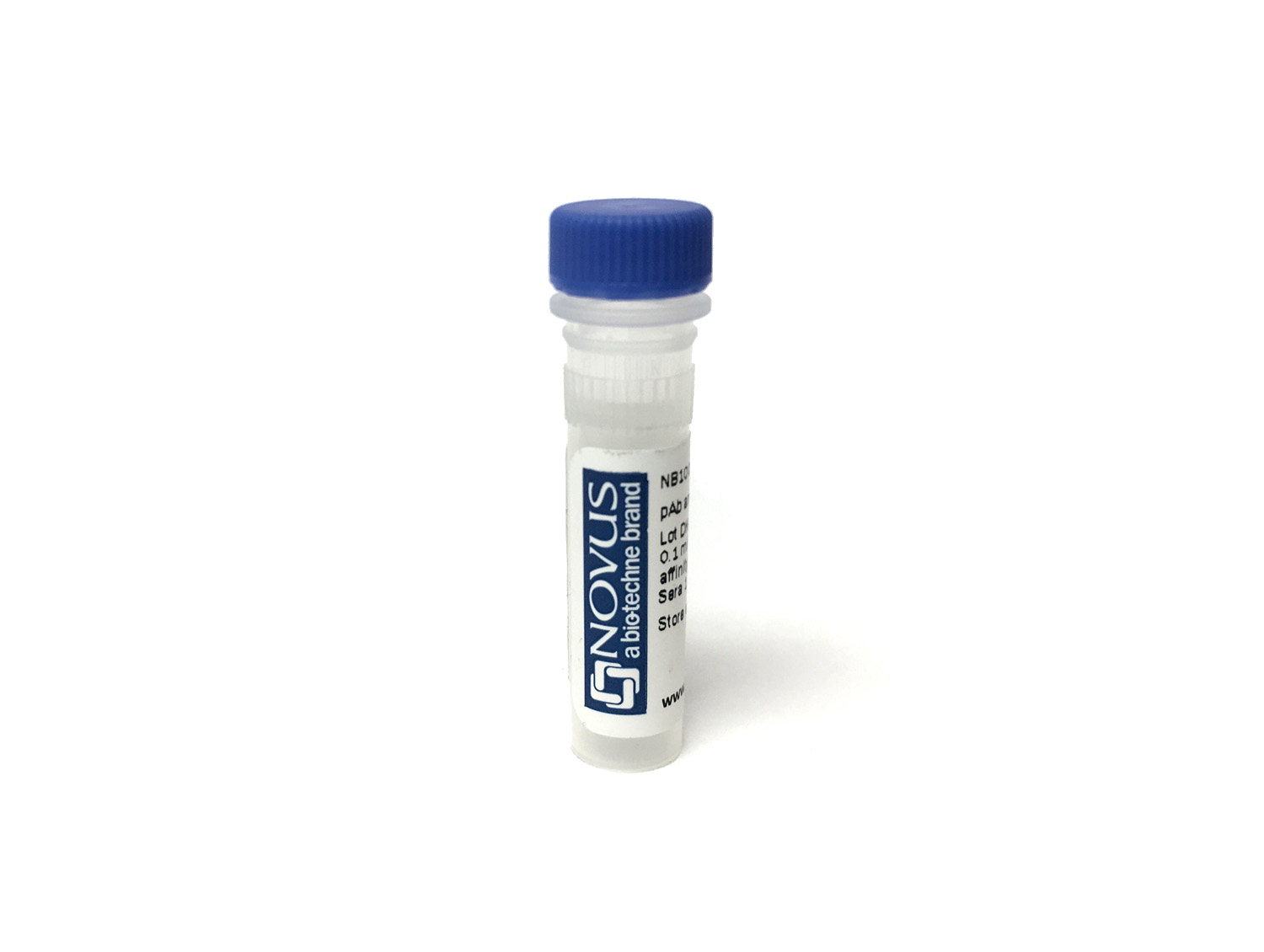CRISPR-Cpf1 Antibody (2D5-6G11) [DyLight 594]
Novus Biologicals, part of Bio-Techne | Catalog # NBP2-78819DL594


Conjugate
Catalog #
Forumulation
Catalog #
Key Product Details
Species Reactivity
Bacteria, Bacterial
Applications
Western Blot
Label
DyLight 594 (Excitation = 593 nm, Emission = 618 nm)
Antibody Source
Monoclonal Mouse IgG1 kappa Clone # 2D5-6G11
Concentration
Please see the vial label for concentration. If unlisted please contact technical services.
Product Specifications
Immunogen
Partial recombinant protein made to an N-terminal portion of the Lachnospiraceae bacterium CRISPR-Cpf1 protein
Specificity
This antibody is specific for Lachnospiraceae bacterium CRISPR-Cpf1.
Clonality
Monoclonal
Host
Mouse
Isotype
IgG1 kappa
Applications for CRISPR-Cpf1 Antibody (2D5-6G11) [DyLight 594]
Application
Recommended Usage
Western Blot
Optimal dilutions of this antibody should be experimentally determined.
Application Notes
Optimal dilution of this antibody should be experimentally determined.
Formulation, Preparation, and Storage
Purification
Protein A or G purified
Formulation
50mM Sodium Borate
Preservative
0.05% Sodium Azide
Concentration
Please see the vial label for concentration. If unlisted please contact technical services.
Shipping
The product is shipped with polar packs. Upon receipt, store it immediately at the temperature recommended below.
Stability & Storage
Store at 4C in the dark.
Background: Cpf1
Cpf1 represents a new generation of CRISPR effector nucleases first isolated from Prevotella and Francisella1 (3). Cpf1 or Cas12a is present in both bacteria and archea and is a class 2/type V CRISPR-Cas effector protein which shares some homology with Cas9. For example, Cpf1 and Cas 9 share homologous RuvC-like nuclease domain and Arg-rich region (4). However, key differences between CRISPR/Cpf1 and CRISPR/Cas9 have been noted. Cpf1 requires a 5'-TTTN-3' PAM sequence located upstream to the target DNA and generates a staggered DNA overhang upon cleavage. Additionally, Cpf1 possesses RNase activity which simplifies crRNA or gRNA processing (2).
Using CRISPR-Cas technology, double-stranded DNA breaks may be induced within specific targeted genome sequences (target DNA; protospacer) for insertion or removal of DNA sequences for gene editing applications. To target a specific genomic sequence, gRNAs complementary to specific DNA targets are created. The gRNA will recognize the DNA sequence, and the Cas9 or Cpf1/Cas12a enzyme will cleave the DNA at the targeted location. Once the targeted DNA is removed, the cell's own DNA repair mechanism inserts or removes a DNA sequence resulting in genomic editing. Cpf1 orthologs Acidaminococcus sp Cpf1 (AsCpf1 151kDa) and Lachnospiraceae bacterium Cpf1 (LbCpf1 143kDa) are able to achieve efficient gene editing in human cells (3).
References
1. Oakes, B. L., Fellmann, C., Rishi, H., Taylor, K. L., Ren, S. M., Nadler, D. C., . . . Savage, D. F. (2019). CRISPR-Cas9 Circular Permutants as Programmable Scaffolds for Genome Modification. Cell, 176(1-2), 254-267.e216. doi:10.1016/j.cell.2018.11.052
2. Verwaal, R., Buiting-Wiessenhaan, N., Dalhuijsen, S., & Roubos, J. A. (2018). CRISPR/Cpf1 enables fast and simple genome editing of Saccharomyces cerevisiae. Yeast. https://doi.org/10.1002/yea.3278
3. Safari, F., Zare, K., Negahdaripour, M., Barekati-Mowahed, M., & Ghasemi, Y. (2019). CRISPR Cpf1 proteins: Structure, function and implications for genome editing. Cell and Bioscience. https://doi.org/10.1186/s13578-019-0298-7
4. Makarova, K. S., Wolf, Y. I., Alkhnbashi, O. S., Costa, F., Shah, S. A., Saunders, S. J., ... Koonin, E. V. (2015). An updated evolutionary classification of CRISPR-Cas systems. Nature Reviews Microbiology. https://doi.org/10.1038/nrmicro3569
Long Name
CRISPR-associated Endonuclease Cas12a
Alternate Names
Cas12a
Additional Cpf1 Products
Product Documents for CRISPR-Cpf1 Antibody (2D5-6G11) [DyLight 594]
Product Specific Notices for CRISPR-Cpf1 Antibody (2D5-6G11) [DyLight 594]
DyLight (R) is a trademark of Thermo Fisher Scientific Inc. and its subsidiaries.
This product is for research use only and is not approved for use in humans or in clinical diagnosis. Primary Antibodies are guaranteed for 1 year from date of receipt.
